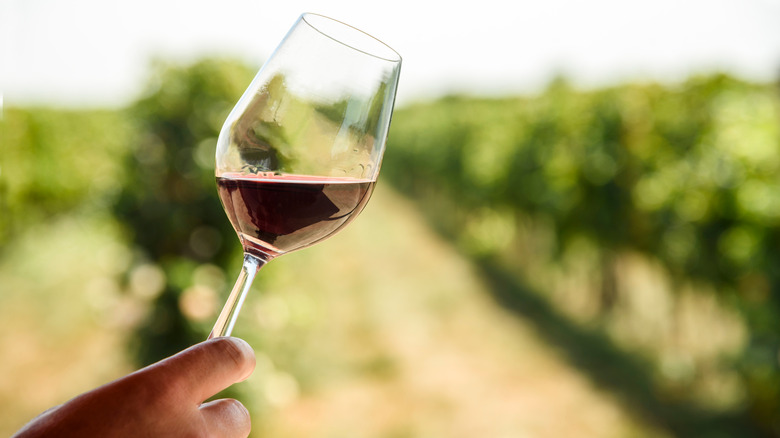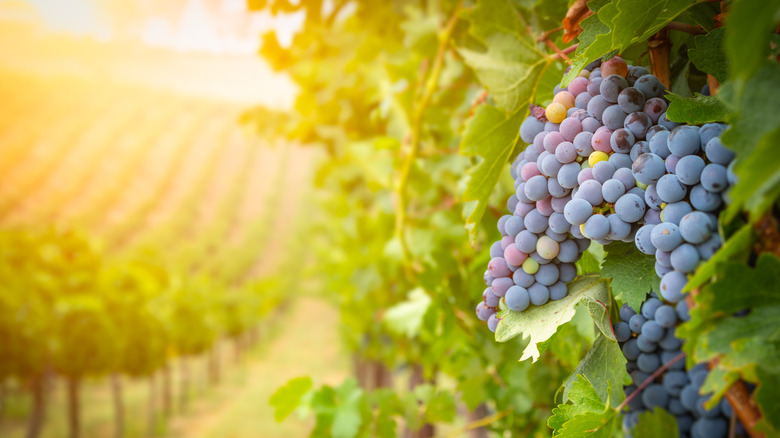What Percentage Of Grapes Grown In The US Are Turned Into Wine?
The duality of the grape is unlike any other. Edible, yet able to transform into a sippable delight, it's not shocking that grapes are America's most prized fruit crop, valued at $6.5 billion (via The National Association of American Wineries). It can be eaten fresh and dried or used as the star ingredient in juices, jellies, and wine — there are innumerable ways that grapes can be enjoyed. Yet, with so many being grown to satisfy demand, what percentage of grapes are actually turned into wine?
As crazy as it may sound, not all grapes can be used to make wine. In fact, there are three types of grapes: table, juice, and wine. While table grapes are large with thin skins and hardly any seeds, which makes them perfect for snacking, juice grapes are instead more succulent with thicker, yet easy-to-peel skins that make them great for jams and juices. Unlike table and juice varieties, wine grapes are small, sweet, thick-skinned, and loaded with seeds — traits that contribute to the drink's iconic profile.
Although all three types of grapes contribute to the roughly 900,000 acres of land in the US dedicated to total grape production (via AgMRC), the number of grapes reserved for winemaking might just shock you.
Most of the grapes grown on American soil are used to make wine
When pondering the many winemaking regions, places like Italy, France, or Spain might come to mind. However, PBS explains that the U.S. trails closely behind these oenological greats. But, to accommodate production, how many of the total grapes grown in the U.S. will end up in our glasses?
According to the National Institute of Food & Agriculture, over 70% of the grapes grown on American soil are used to make wine. That means a mere fourth of all grape production accounts for the grapes we snack on and use to make byproducts like fruit juices and jellies. With so many millions of grapes reserved for winemaking, it's no wonder that the alcoholic beverage has become one of America's favorite tipples.
Surprisingly, few of those wine grapes grown on American soil are actually native species. Despite almost 30 indigenous varietals currently being cultivated in the U.S., Wine Enthusiast reports that they're not typically used as winemakers tend to favor European wine grapes (Vitis vinifera) due to their increased complexity and preferability among consumers.

